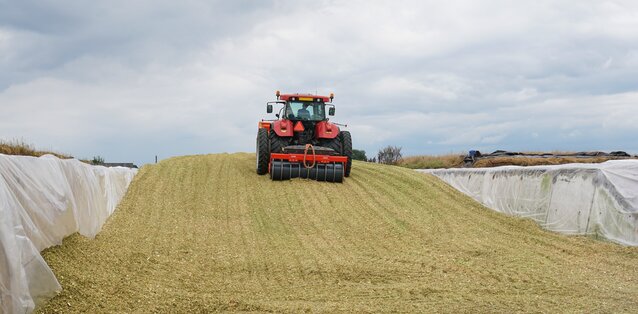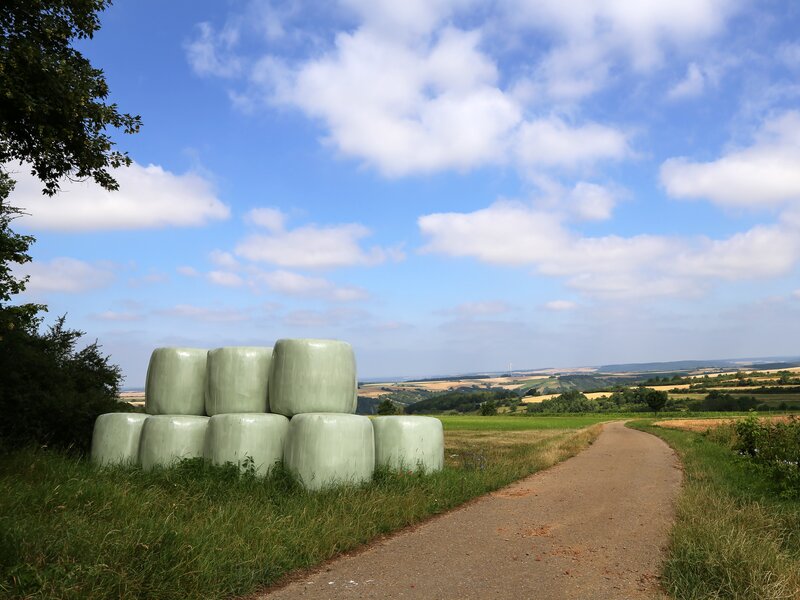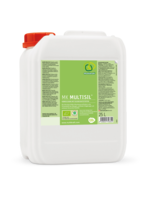

Silage
Optimum silaging process
To supply animals as effectively as possible with the nutrients they need, silage of excellent quality is required. One important consideration in the creation of high-quality silage is the fermentation process. This requires an anaerobic environment, so an airtight cover is essential. The natural silage additives from Multikraft allow the fermentation process, the contents of the silage and the aerobic stability to be controlled. In contrast to homofermentative silage additives, MK Multisil is heterofermentative and forms other fermentation products, such as propanediol, alongside the lactic acid.

How is silage made correctly?
A good-quality silage is essential for a high feed intake by the animals. To ensure that your silage is of high quality, the important factors are the harvesting time and the cutting and clamping of the silage.
Alongside a high-quality crop, the right cutting time plays a key role in the production of good silage. The start of heading is the ideal time. The cut height should be not lower than 5 cm on permanent pasture and not lower than 7 cm on silage grass leys.
Leave the cut silage in the field for as short a time as possible. The grass should have a moisture content of around 70 per cent and it should not be allowed to dry any further. Dry grass is more difficult to compact than partially moist grass.
The cut length should be short. This results in a higher sugar output, a rapid reduction in the pH and grass that is easier to compact. All of this leads to more stable silage. The drier the grass is, the shorter it must be cut or chopped
The most common silage-making mistakes and how to avoid them
To make the most of the benefits of silage, it must be of the right quality. The animals will only receive sufficient nutrients and energy if the quality is high enough. This has a positive effect on their digestion and on the quantity and quality of the milk. Problems start to occur when the silage clamp is contaminated. Mould or the occurrence of reheating also reduce the quality of the silage.
The development of mould can be prevented by inspecting the silage film regularly and repairing holes and tears with adhesive tape. It is also important to ensure that the clamp is not filled too quickly and that the grass is therefore not adequately compacted.
A good-quality silage is essential for a high feed intake by the animals. To ensure that your silage is of high quality, the important factors are the harvesting time and the cutting and clamping of the silage.
Alongside a high-quality crop, the right cutting time plays a key role in the production of good silage. The start of heading is the ideal time. The cut height should be not lower than 5 cm on permanent pasture and not lower than 7 cm on silage grass leys.
Leave the cut silage in the field for as short a time as possible. The grass should have a moisture content of around 70 per cent and it should not be allowed to dry any further. Dry grass is more difficult to compact than partially moist grass.
The cut length should be short. This results in a higher sugar output, a rapid reduction in the pH and grass that is easier to compact. All of this leads to more stable silage. The drier the grass is, the shorter it must be cut or chopped
The most common silage-making mistakes and how to avoid them
To make the most of the benefits of silage, it must be of the right quality. The animals will only receive sufficient nutrients and energy if the quality is high enough. This has a positive effect on their digestion and on the quantity and quality of the milk. Problems start to occur when the silage clamp is contaminated. Mould or the occurrence of reheating also reduce the quality of the silage.
The development of mould can be prevented by inspecting the silage film regularly and repairing holes and tears with adhesive tape. It is also important to ensure that the clamp is not filled too quickly and that the grass is therefore not adequately compacted.

